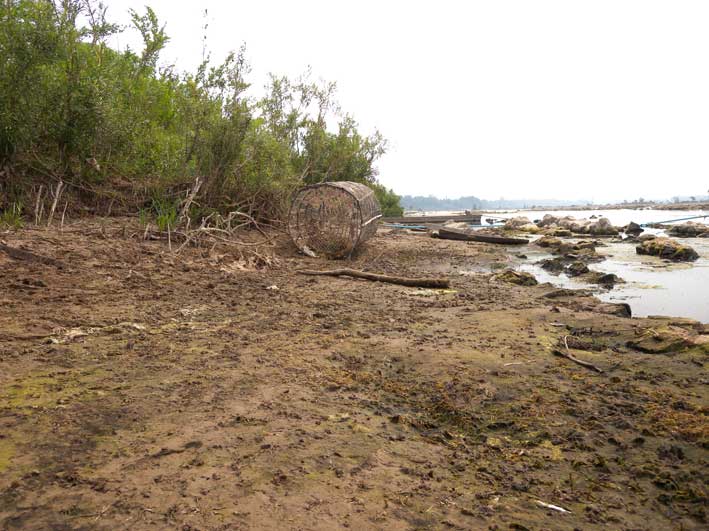 |
Low water in the Mekong in southern Laos.
photo Idei |
|
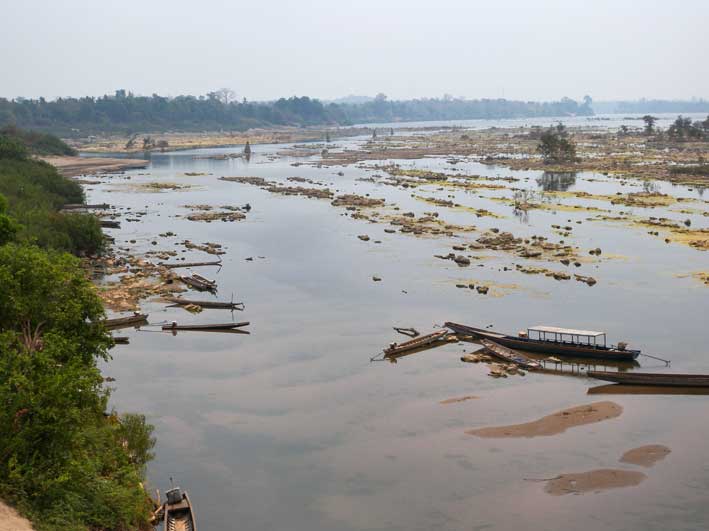 |
Rocky ridges all over.
photo Idei
|
|
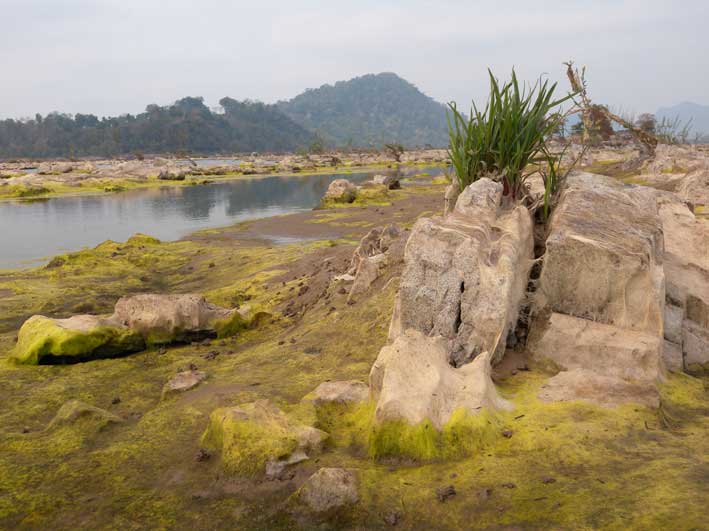 |
C. mekongensis grows in cracks and between boulders, firmly rooted to survive the high water current.
photo Idei |
|
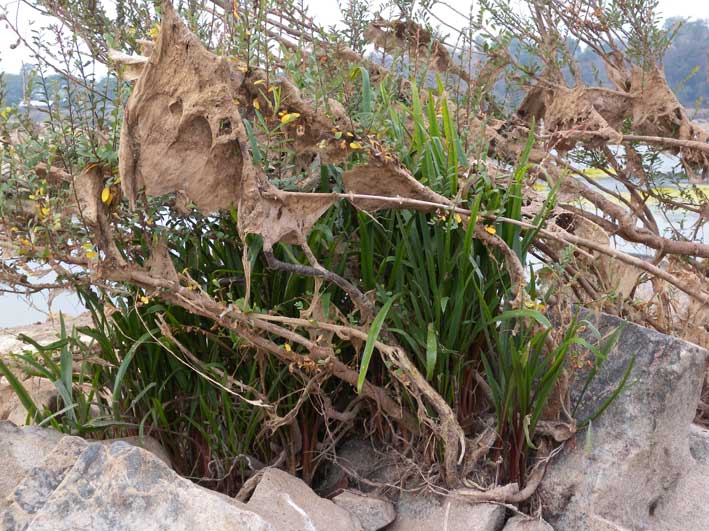 |
Also sheltered behind the typical willow tree stands.
photo Idei
|
|
| |
|
|
|
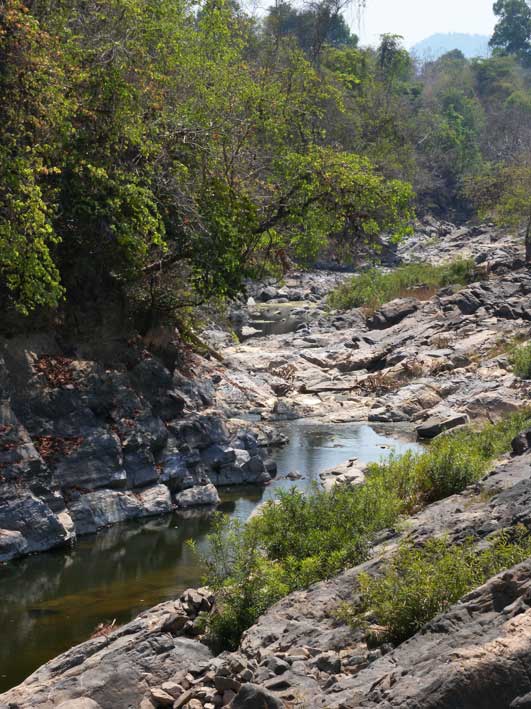 |
A creek at low water between the many 'islands' in southern Laos.
photo Idei
|
|
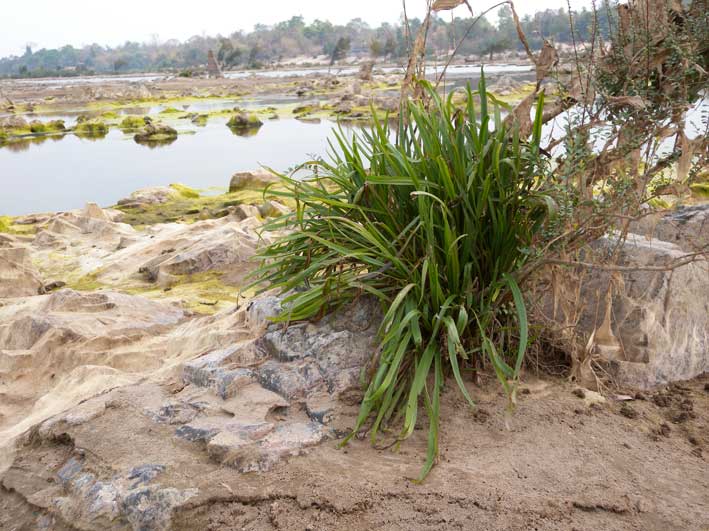 |
A huge patch of C. mekongensis in Laos.
photo Idei
|
|
 |
Another habitat is southern Laos.
photo Idei
|
|
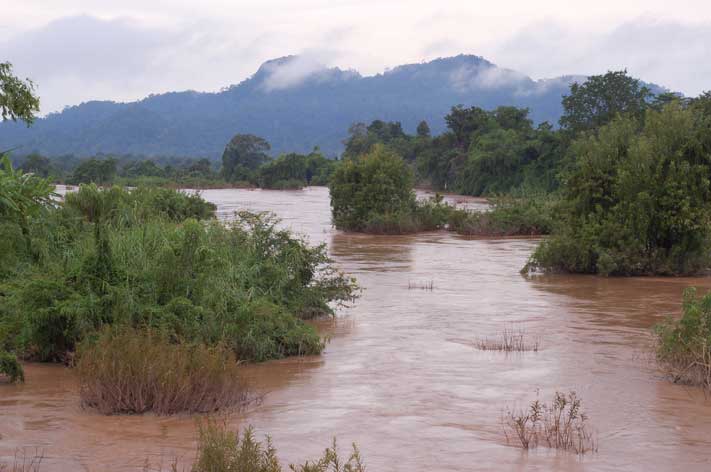 |
How it looks in the high water season, note the willow tree stands.
photo Idei
|
|
| |
|
|
|
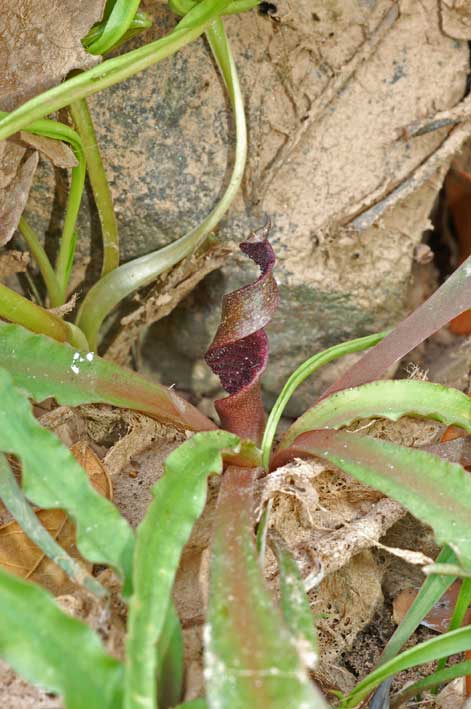 |
C. mekongensis from Laos
coll. Idei LK5608
photo Idei
|
|
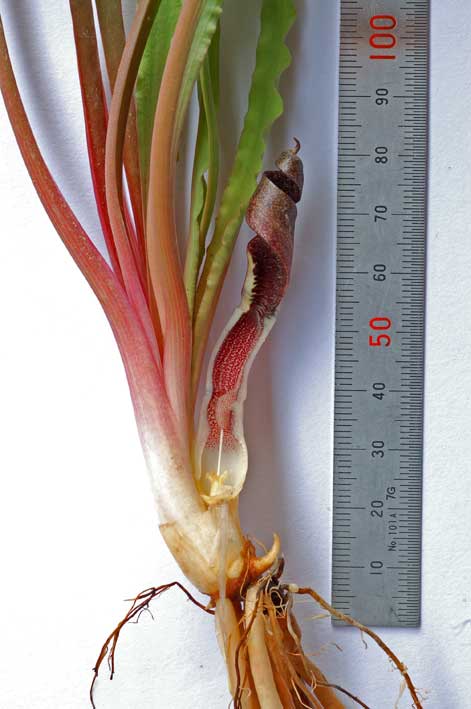 |
This opened spathe has a rather short twist at the top of the limb. Note the transverse ridges on the limb.
coll. Idei LK5608
photo Idei
|
|
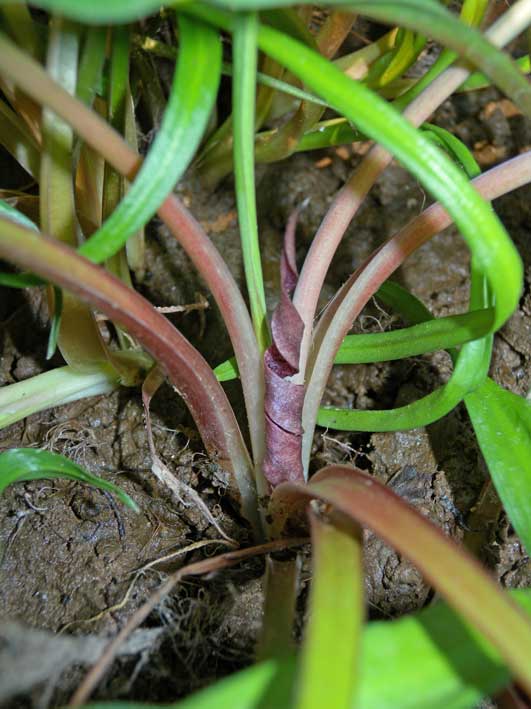 |
C. mekongensis from Cambodia
coll. Idei CKR0104
photo Idei
|
|
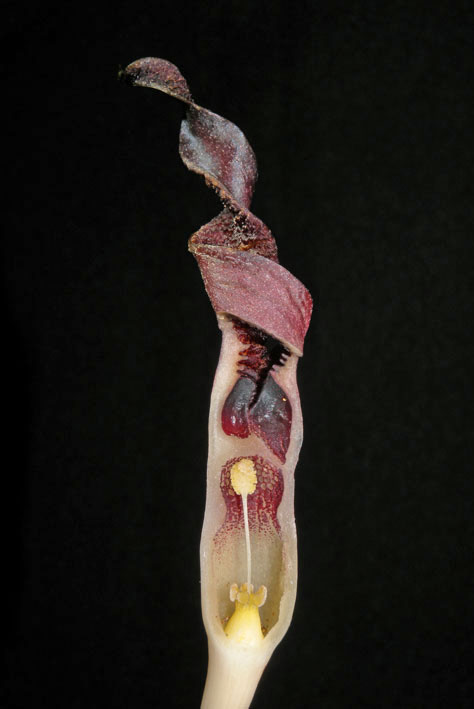 |
The limb may be twisted many times more. Note the short tube with a collar.
coll. Idei CKR0104
photo Idei
|
|
| |
|
|
|
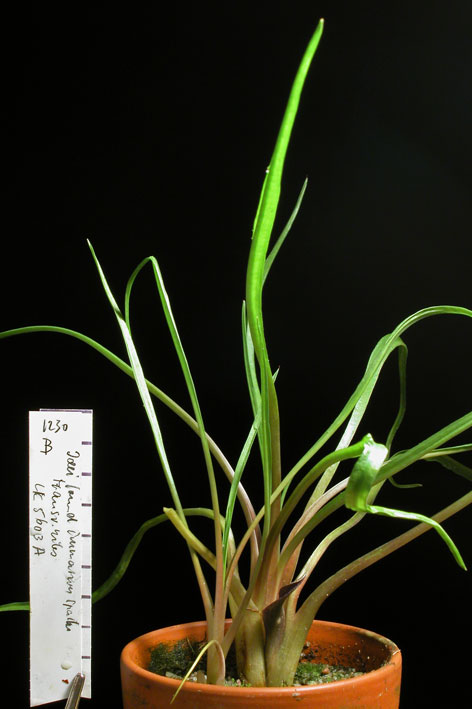 |
A cultivated C. mekongensis with a far less luxurious foliage.
coll. Idei LK5603, cult. B1230
|
|
 |
This spathe has a hardly twisted limb of the spathe.
coll. Idei LK5603, cult. B1230
|
|
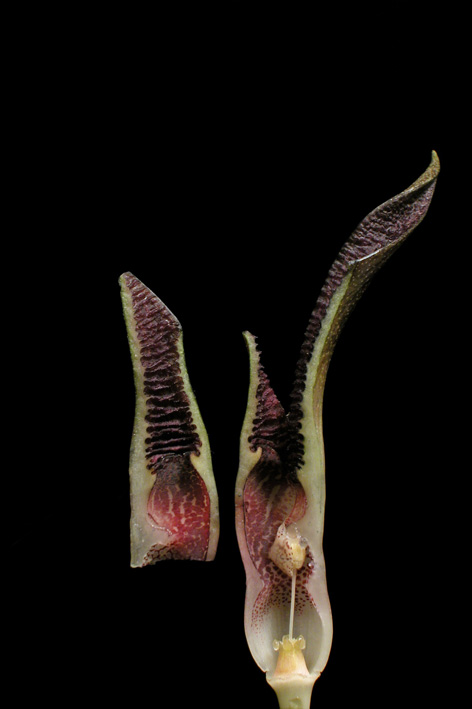 |
A longitudinal section of the spathe. Note the collar.
coll. Idei LK5603, cult. B1230
|
|
 |
Note also the constricted kettle and the 'roof' above the spadix..
coll. Idei LK5603, cult. B1230
|
|
| |
|
|
|
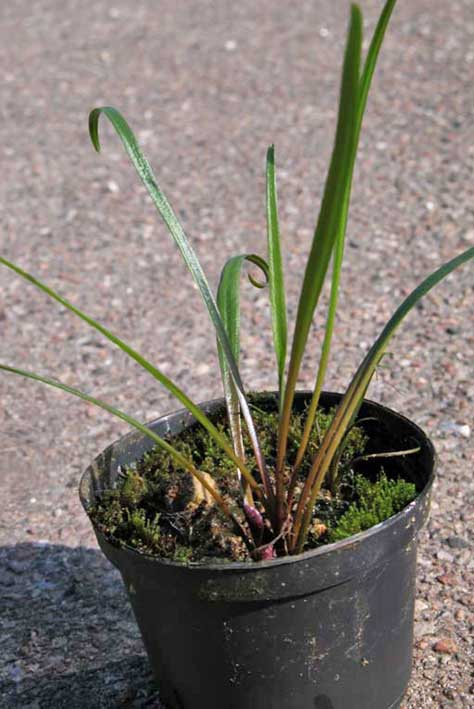 |
The outer leaves have still the spike form (terete) from the dormant phase. The plant flowers immediately when it starts growing.
coll. Idei LK5601,cult NJ
photo Jacobsen
|
|
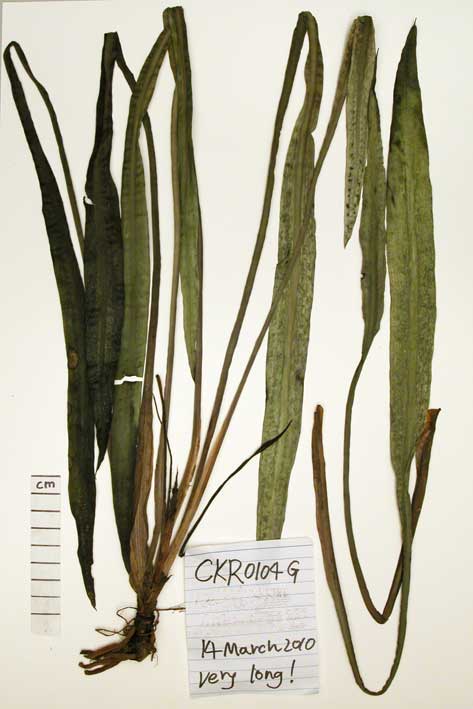 |
A herbarium specimen of C. mekongensis from Cambodia.
coll. Idei CKR0104
|
|
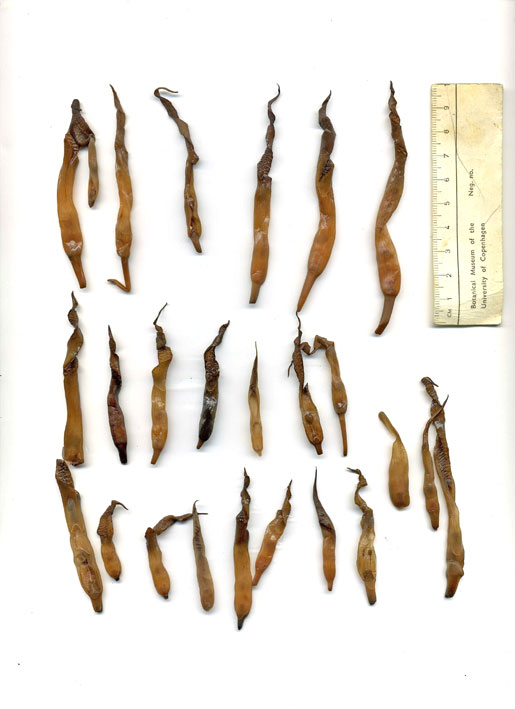 |
A sample of alcohol preserved spathe's from a Laos locality of C. mekongensis.
coll. Idei LK-G
photo Jacobsen
|
|
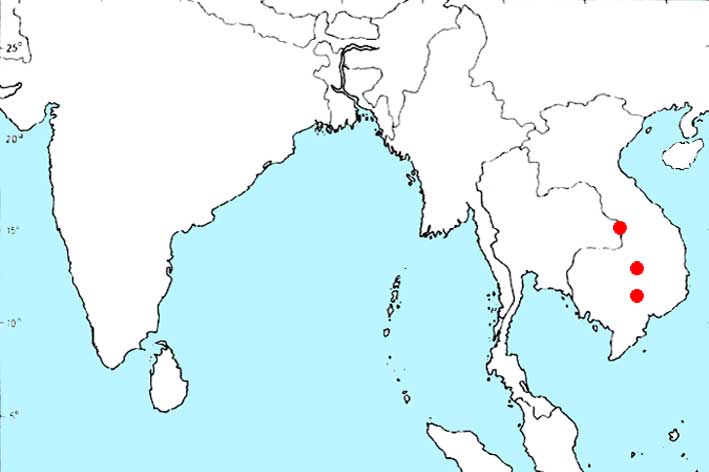 |
Distribution of C. mekongensis in very east of Thailand, the Champasak province in Laos and the Kratie province in Cambodia
|
|
| |
|
|
|
Cultivation of C. mekongensis is easy in loamy sand with or without some peat litter, but it may take an extra year to flower it. In July the plant starts withering, all the leaves will go down in this resting phase and a few spike like leaves develop (in nature it will be submerged). Only in September / October it will thrive again normal leaves. Because of its seasonal character it is not suited for the aquarium.
Updated July 2012 |
Literature.
- Idei, T., J.D. Bastmeijer & N. Jacobsen, 2010. Geschichten vom Mekong: Zwei neue Cryptocorynen (Araceae). Aqua-Planta 35(4): 139-146 (see the Document service, included an English translation)
- Mekong River Commission (for water heights and predictions) at: http://ffw.mrcmekong.org/
|
|